Starlinks, ZTF, and WTF?
2/13/2023. Some Starlink satellites launched on January 31 crossed Gemini in the twilight and I imagined there might be a decent photo to be made. This is pretty close to what I had in mind as the first dozen or so of the chain split Castor and Pollux.
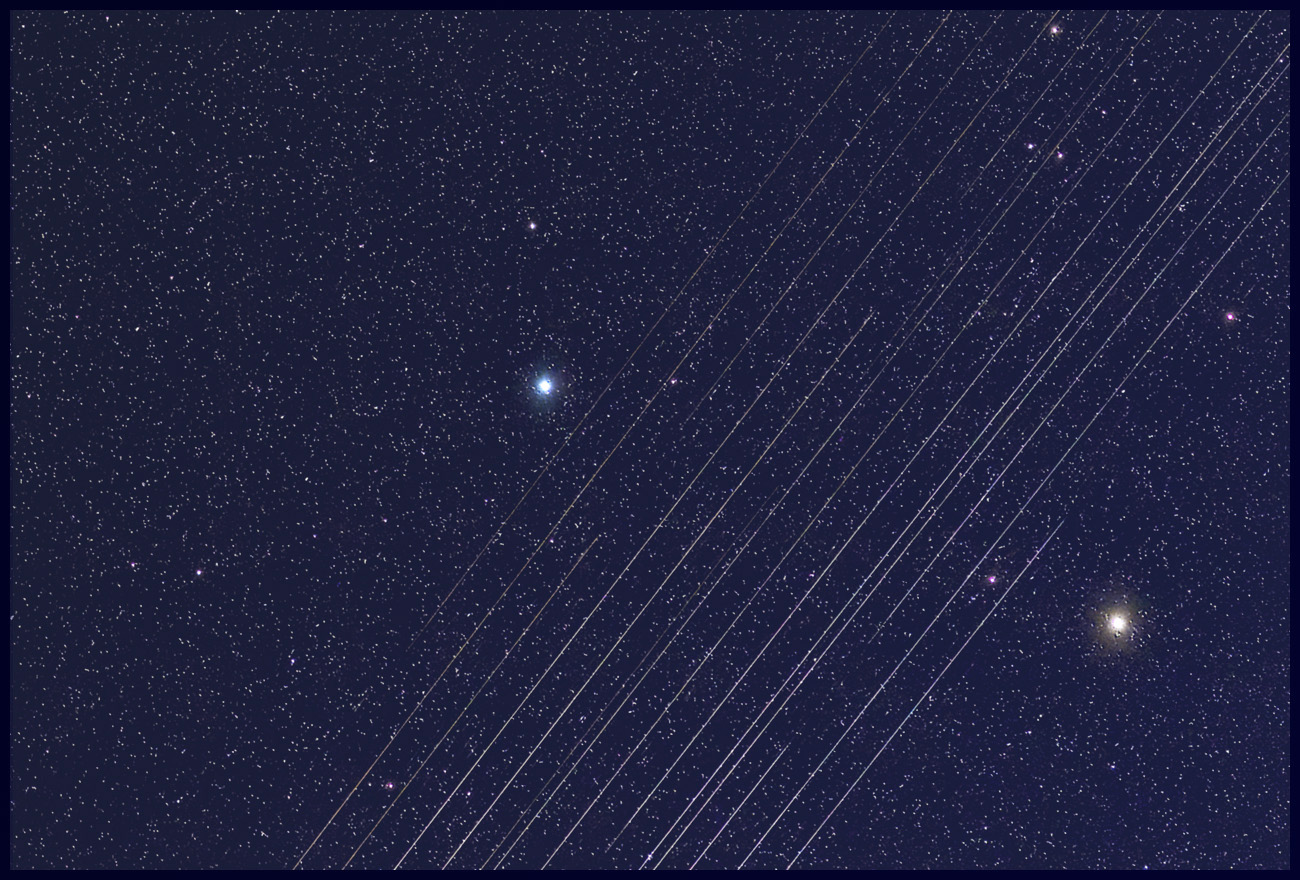
5x20s Sigma 104 @ F2.0, ISO 800
SWSA, Synthetic flat, etc.
Biggable.
Comet 2022 E3 (ZTF) cruised south past the Hyades. I grabbed an hour's worth of 20s exposures to see what I could do with them. Scattered very high very thin clouds enlarged the brighter stars. There's probably a lot more in the can, but this pretty tightly cropped bit is a decent start. It's been CFA drizzle integrated, blurxterminated, and resampled for web presentation. It would be better if I could work out sufficiently effective calibration to show much more of the frame and bring up some fainter stuff, but the day is young:
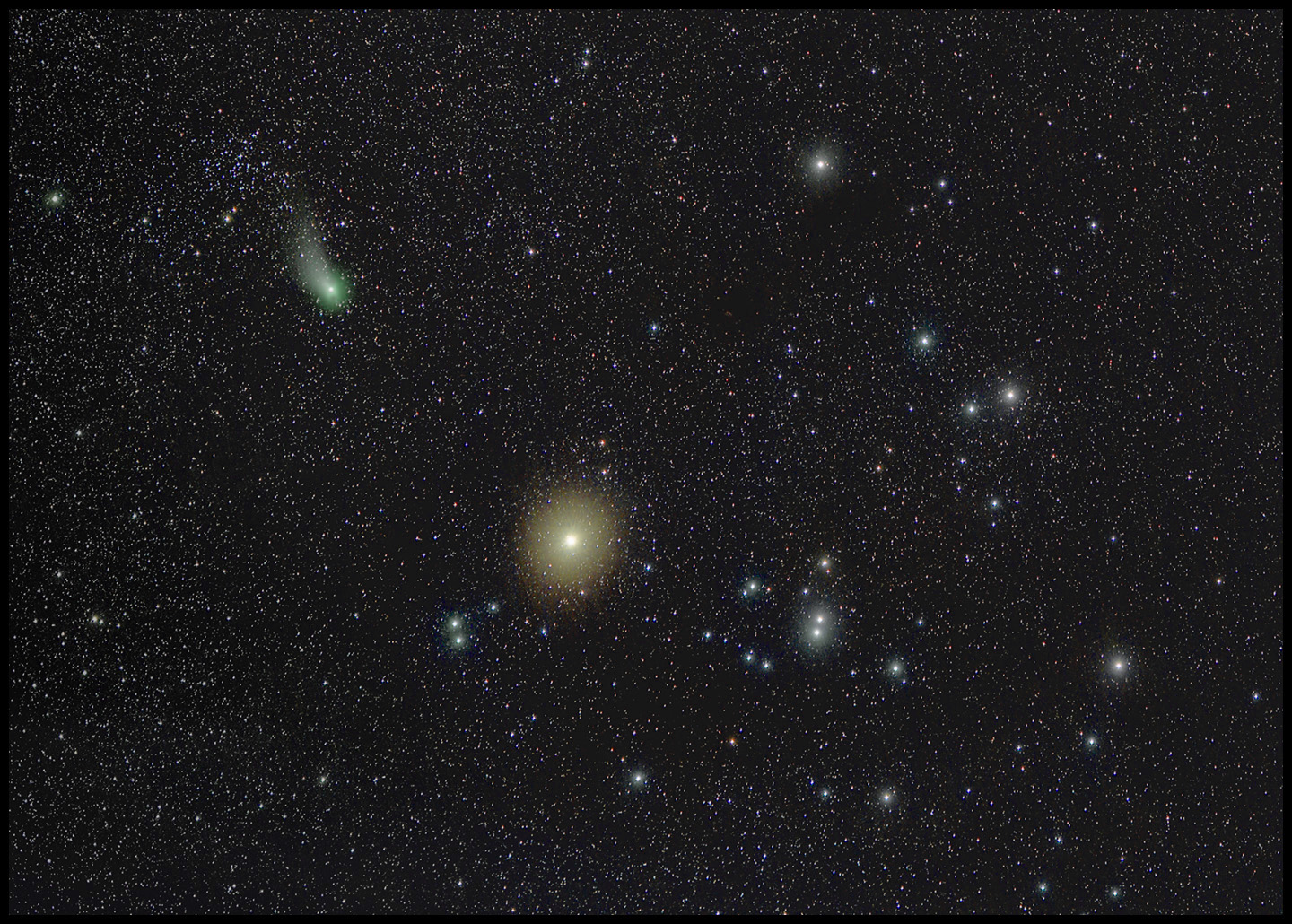
189x20s, 105 @ F2, ISO 800
SWSA, CFA drizzled, BlurXterminated
Also biggable.
I've now got a full-frame, flatted and drizzled version (two actually, one with 36 subs and one with 150). Flats exposed using the tracing panel need to be underexposed by 2 EV to work reasonably well. I can't explain why that is (yet); it's just how it works. The shorter, "proof of concept" stack seems cleaner at web resolution than the taller stack, owing in part to its not including late frames that include bare tree limbs on the western edge of the frame. The dark nebulae are easier to see in the 150-sub version, but you can still make them out after enlarging this one:
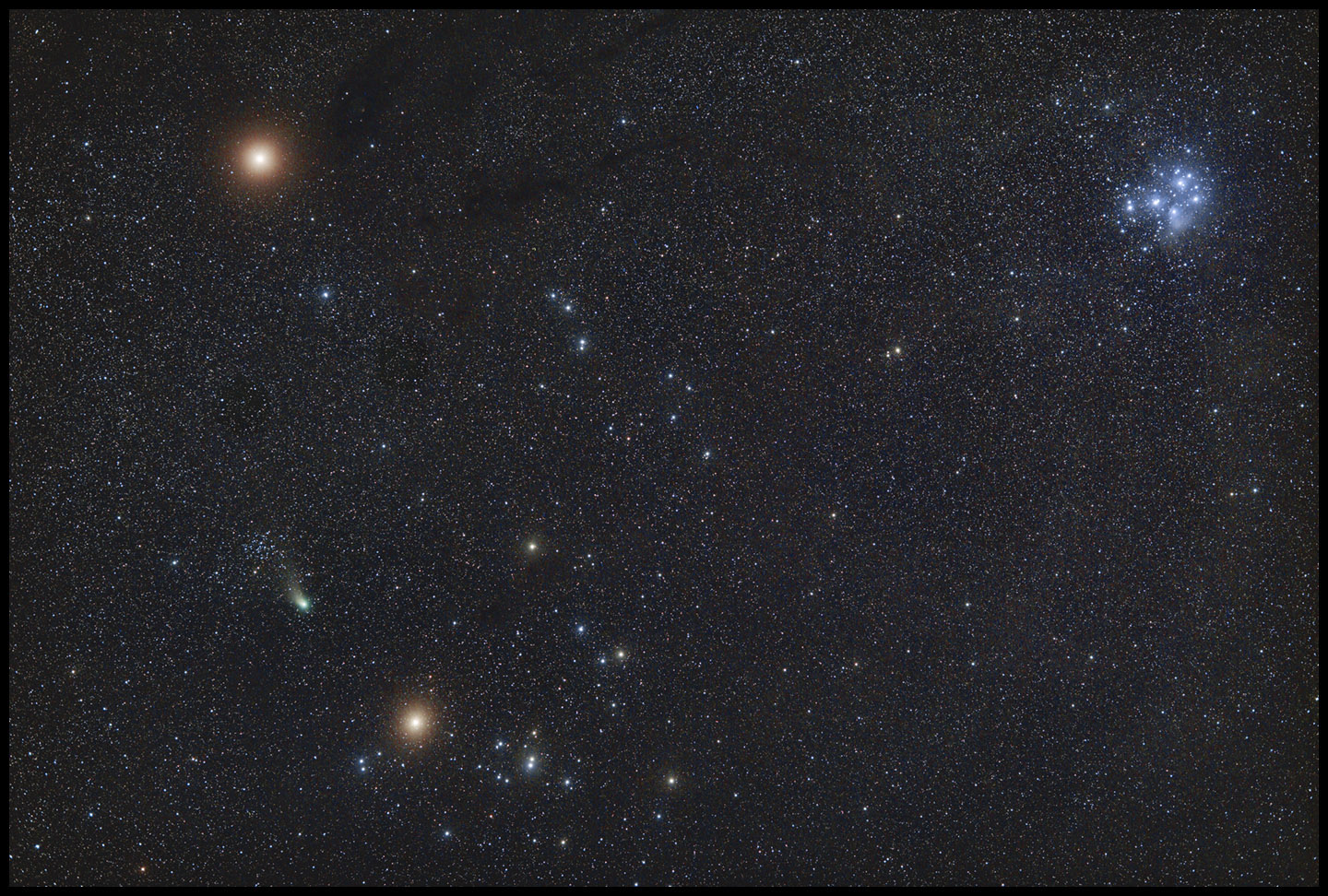
36x20s, 105@F2, ISO 800
SWSA
Click it.
Drizzle integration works well. BlurXterminator works well. Neither is on display in that photo, but they do work well.
I can't leave that pile of data alone. Local Histogram Equalization and Generalized Hyperbolic Stretch (finally) brought out the molecular cloud more or less as I wanted from a taller stack. ZTF's ion tail extends faintly, faintly straight left from the comet's head. Some of the vague mottling at lower right well below the Pleiades is courtesy of a few bare branches that slipped into the field unnoticed. Because of them, I trimmed the 189 subs down to 150:
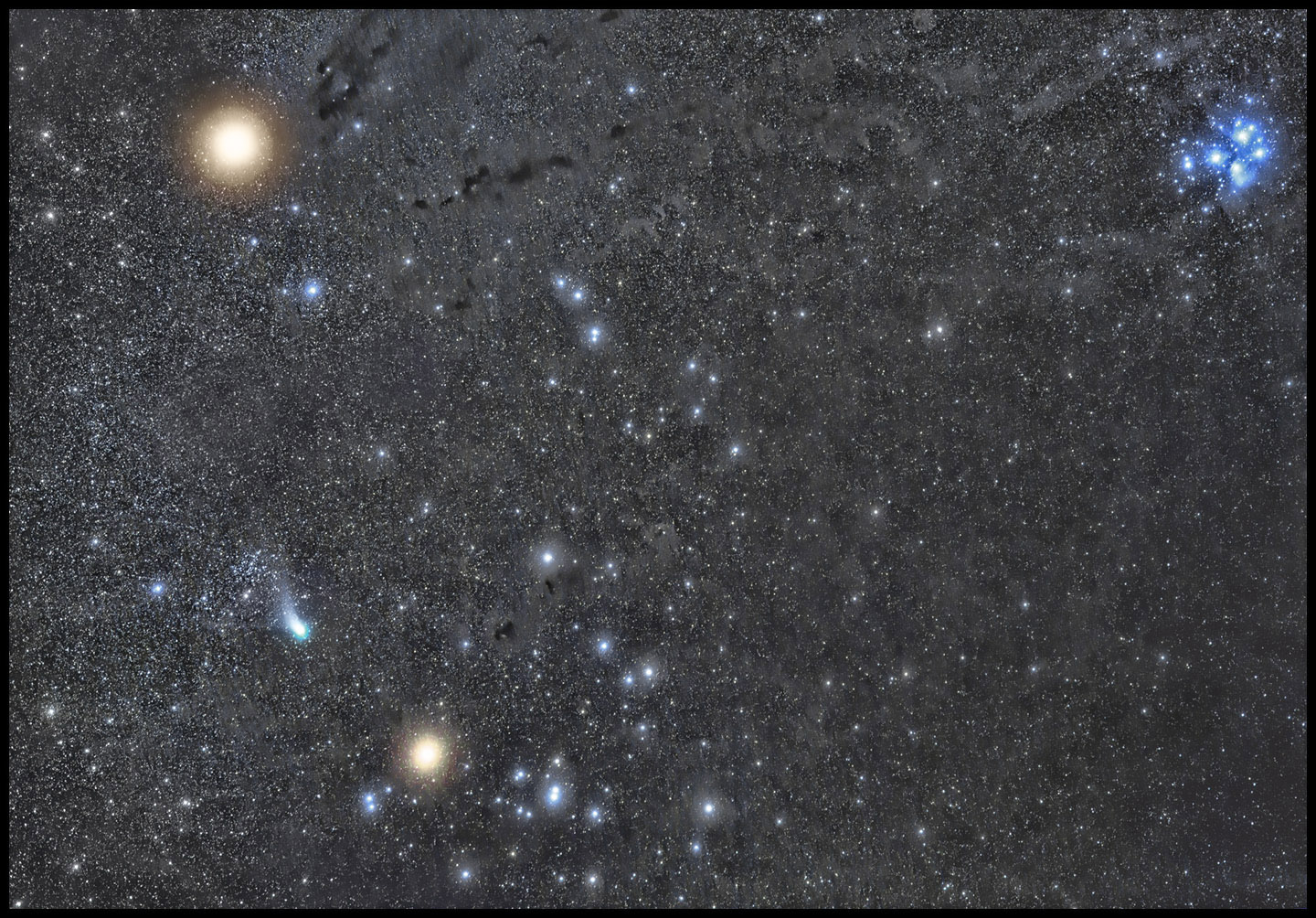
150x20s
Clicking encouraged.
Early in the Starlink pass, something bright came along. My attention was elsewhere, so I didn't see it. It was either very lucky that it appeared and disappeared within a single 20s exposure, or that it flashed across the frame in almost exactly the same direction as the Starlink satellites. Choose your luck. I lean toward it being a flare from Starlink launcher debris rather than a remarkably aligned meteor (I don't see the expected varigated colors for a descending meteor, either; I've leaned on the color a little hard in this photo to check that out). Anyway, here's a single frame from the stack shown above. Make of it what you will:
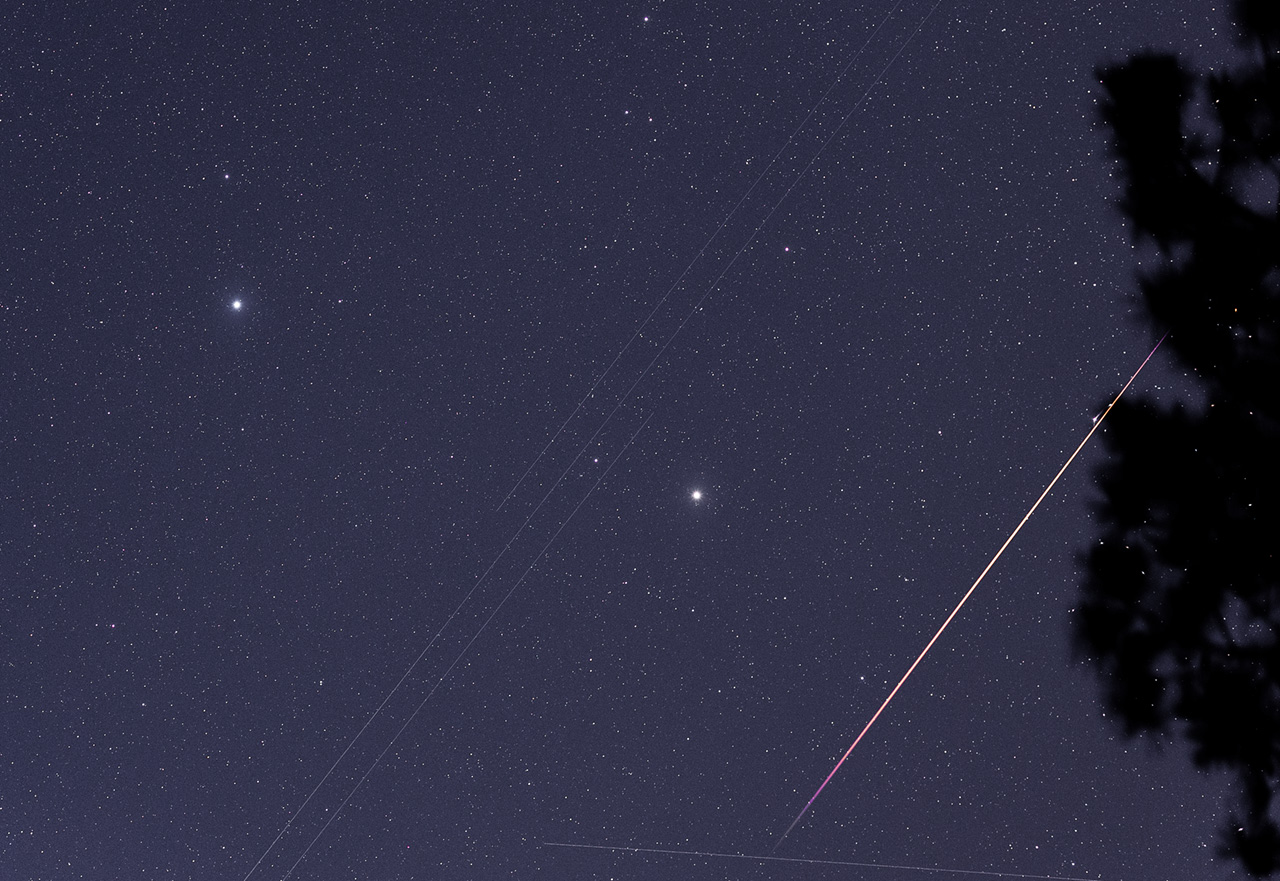
20s, 105@F2, ISO 800
Sure, make it big, why not?
The mystery will endure.
2/16/2023. Public service announcement. Some cheap tracing pads can be used very easily and effectively as flat-panel light sources. I bought one in A4 size ("LitEnergy Portable A4 LED Copy Board Light Tracing Box") and it works well -- as you can see above -- though it is cumbersome owing to its generous dimensions. It's just big enough to use on the RC (I think), so it's bigger than the TMB92 really needs.
Encouraged by the A4 panel, I bought an A5 panel for the TMB92 and 105 Sigma (and for smaller glasses) thinking it would be much easier to carry and use. But this one does not work for my purposes. It's not the dotted screen; it's that the light is extremely uneven from one side to the other. There might be a way to redistribute it, but for $12 delivered, let's not sweat it. At least it included a nice USB cable that fits the one that does work.
:: top ::
|